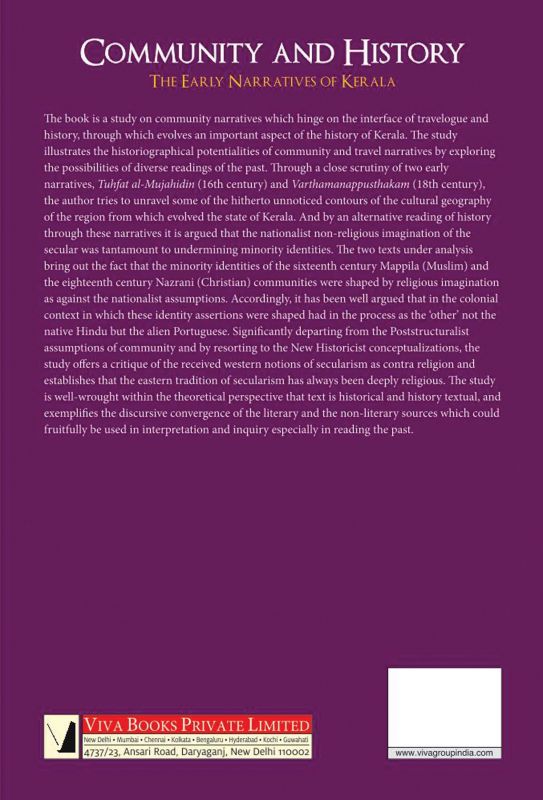Tales from the past: Writing travel, history & community
Various communities defined their identities through several micro-narratives.

Travel writing in India has remained mostly Eurocentric, both as a subgenre and as an academic domain. Step out of Europe, you come across studies on travels mainly by Americans. Consequently dominant intellectual assertions have also been less appreciative of the status of this form from the subcontinent. Barring a very few studies, there has been considerable paucity of critical material on 'Indian' travels to the rest of the world. It was only quite recently that there started a new-found critical interest in travel narratives from India. Travel culture of Kerala is yet to be understood in its entirety. The quest for the unknown and wanderlust, or rather a Ulyssean spirit, bred many travels, real and imagined, as evident from Sandesakavyas of the 13th and f14th centuries, like Unnunili Sandesam.
Narratives of travel from Kerala, across time and space, and so hybrid in nature, offer unique insights into the very idea of travel itself which could fruitfully be analyzed using the methodology of comparative literature. As a geographical space which is culturally more connected to Asia and Europe than to the rest of India, histories of Kerala have always remained very mosaic. It is inextricably linked to the history and culture of various communities, which in turn, have attracted attention by virtue of its historiographical significance. Decisive junctures in the mainstream Kerala history were also repercussions of events outside India.
For instance, on could easily think of Malabar Rebellion of 1921, which was an immediate response to the Khilafat Movement. Various communities defined their identities through several micro-narratives, which also contributed to the corpus of history. A curious case in point is the book Varthamanappusthakam (1785), which is considered to be the first travelogue in Malayalam. One of the earliest travel narratives from the subcontinent, this work by Paremakkal Thoma Kathanar documented the history and lineage of the early Christian community of Kerala, known as Nazranis. Similarly, Tuhfat al Mujahidin (1583), written in Arabic by Shaykh Zainuddin Makhdum II of Ponnani, also played a decisive role in the process of identity formation of the early Muslim community, whose members are called Mappilas.
Both these works are products of the native response to the first European colonial experience. 1583 and 1785 were times of Portuguese colonialism in Kerala. Interestingly, both these communities adopted distinct strategies to negotiate with the imperial West. While Mappilas opted to stand by the Zamorins for a direct resistance to the Portuguese, Nazranis took a diplomatic step of negotiation with them, two centuries later. The sense of community and its ethos, as expressed in these narratives, have influenced the historiography of Kerala. This is made more explicit when these texts are read alongside the mainstream histories of Kerala.
Lineages of Travel Writing in Kerala over the years
Modern travel writing in Kerala stands in the lineage of a great tradition and it is deeply indebted to Varthamanappustakam, the result of an 'involuntary travel'. Paremakkal Thoma Kathanar, the author, was a Christian priest on a diplomatic mission to Europe and its record gifted the first travelogue to Malayalam literature. Kathanar had no models for travel writing in any language; but Varthamanappusthakam provided the model for a variety of travel writings in Malayalam. S.K. Pottekkat's Oru Desathinte Katha, which brought him Jnanpith in 1980, traces the history of Athiranippadam, an imaginary landscape alongside the travels across Africa and Europe. Credited with about 18 travelogues on Asia, Africa and Europe, he heralded a new era in narrating travels from Kerala.
There has been any number of travel accounts on England, during and after British colonial times. Bilathivisesham by K.P. Kesava Menon is a famous example. More recently, K Ravindran, popularly known as Chintha Ravi, brought in a new sensibility to travel writing. His Ente Keralam, which won Kerala Sahitya Akademi award for the best travelogue in 2009, was telecast in Asianet as a visual travelogue. Writer and journalist Babu Bharadwaj is a prominent name among those who narrated Diaspora experience in travel writing. His Pravasiyude Kurippukal (2013) records the Gulf experience of the Malayali. V. Musafir Ahmed's Marubhumiyude Atmakatha (2010) is also a title to reckon with in this category.
Community and History:
The Early Narratives of Kerala
The book illustrates the historiographical potentialities of community and travel narratives by exploring possibilities of diverse readings of the past.


Through a close scrutiny of two early narratives, Tuhfat-al-Mujahidin and Varthamanapusthakam , the author tries to unravel some of the hitherto unnoticed contours of the cultural geography of the region from which evolved the state of Kerala.
(The writer is the head of the Department of English and Languages, Amrita University, Kochi Campus)

